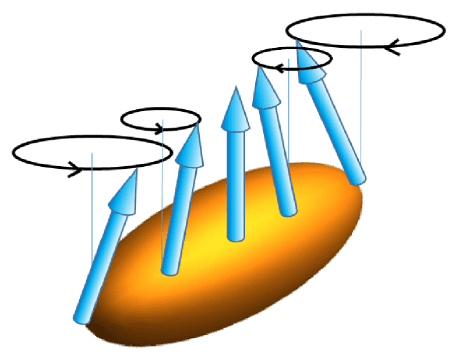
Collective spin oscillations have been spotted for the first time in an ultracold atomic gas. The discovery was made by Bruno Laburthe-Tolra and colleagues at the University of Paris 13.
Their experiment involves cooling about 40,000 chromium atoms to 400 nK, where the all the atoms condense into a single quantum state called a Bose-Einstein condensate (BEC). All of the atoms are in their lowest energy spin state, which has a non-zero spin magnetic moment.
The BEC is the shape of a rugby ball and is confined in an optical track. The team’s experiment begins with the chromium spins aligned in a direction perpendicular to the long axis of the BEC. Then, a magnetic field gradient is applied along the long axis of the BEC, which creates an effective coupling between the spins which encourages a spin to point in the same direction as its neighbours.
Tilted spins
Then, a radio-frequency pulse is fired at the BEC, which applies a torque to the spins causing them to rotate. The team then measured the directions of the spins as they evolved over about 40 ms. In the absence of a coupling, the spins should rotate independently and the alignment would be lost.
Instead, the team found that the spins try to maintain their alignment and rotate collectively in a spin wave. Such waves have been seen in solids and liquids – where very short distances between neighbouring atoms can result in strong spin coupling – but this is the first time that the behaviour has been observed in a dilute quantum gas. Indeed, calculations done by Laburthe-Tolra and colleagues suggest that the system behaves very much like a ferrofluid – a liquid that becomes strongly magnetized when placed in a magnetic field.
The research is described in Physical Review Letters.



